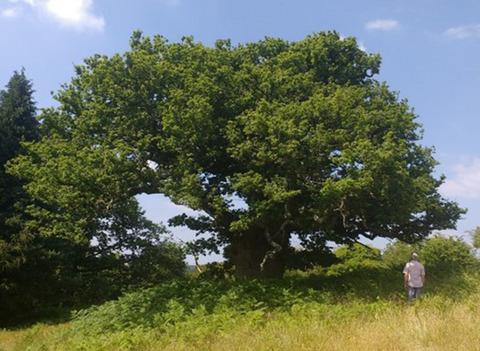当前位置:
X-MOL 学术
›
J. Appl. Ecol.
›
论文详情
Our official English website, www.x-mol.net, welcomes your
feedback! (Note: you will need to create a separate account there.)
Historical maps confirm the accuracy of zero-inflated model predictions of ancient tree abundance in English wood-pastures
Journal of Applied Ecology ( IF 5.0 ) Pub Date : 2021-08-18 , DOI: 10.1111/1365-2664.13996 Victoria Nolan 1 , Tom Reader 1 , Francis Gilbert 1 , Nick Atkinson 2
中文翻译:

历史地图证实了英国林场中古树丰度的零膨胀模型预测的准确性
更新日期:2021-08-18
Journal of Applied Ecology ( IF 5.0 ) Pub Date : 2021-08-18 , DOI: 10.1111/1365-2664.13996 Victoria Nolan 1 , Tom Reader 1 , Francis Gilbert 1 , Nick Atkinson 2
Affiliation

|
- Ancient trees have important ecological, historical and social connections, and are a key source of dead and decaying wood, a globally declining resource. Wood-pastures, which combine livestock grazing, open spaces and scattered trees, are significant reservoirs of ancient trees, yet information about their true abundance within wood-pastures is limited. England has extensive databases of both ancient trees and wood-pasture habitat, providing a unique opportunity for the first large-scale, national case study to address this knowledge gap.
- We investigated the relationship between the abundance of ancient trees in a large sample of English wood-pastures (5,571) and various unique environmental, historical and anthropogenic predictors, to identify wood-pastures with high numbers of undiscovered ancient trees. A major challenge in many modelling studies is obtaining independent data for model verification: here we introduce a novel model verification step using series of historic maps with detailed records of trees to validate our model predictions. This desk-based method enables rapid verification of model predictions using completely independent data across a large geographical area, without the need for, or limitations associated with, extensive field surveys.
- Historic map verification estimates correlated well with model predictions of tree abundance. Model predictions suggest there are ~101,400 undiscovered ancient trees in all wood-pastures in England, around 10 times the total current number of ancient tree records. Important predictors of ancient tree abundance included wood-pasture area, distance to several features including cities, commons, historic Royal forests and Tudor deer parks, and different types of soil and land classes.
- Synthesis and applications. Historical maps and statistical models can be used in combination to produce accurate predictions of ancient tree abundance in wood-pastures, and inform future targeted surveys of wood-pasture habitat, with a focus on those deemed to have undiscovered ancient trees. This study provides support for improvements to conservation policy and protection measures for ancient trees and wood-pastures.
中文翻译:

历史地图证实了英国林场中古树丰度的零膨胀模型预测的准确性
- 古树具有重要的生态、历史和社会联系,并且是枯死和腐烂的木材的主要来源,这种木材是一种全球性正在减少的资源。结合牲畜放牧、开放空间和零星树木的林场是古树的重要水库,但关于林场内它们真实丰度的信息有限。英格兰拥有广泛的古树和林场栖息地数据库,为解决这一知识差距的第一个大规模全国案例研究提供了独特的机会。
- 我们调查了大量英国林场样本 (5,571) 中古树的丰度与各种独特的环境、历史和人为预测因子之间的关系,以确定具有大量未发现古树的林场。许多建模研究中的一个主要挑战是获取用于模型验证的独立数据:在这里,我们引入了一个新的模型验证步骤,使用一系列具有详细树木记录的历史地图来验证我们的模型预测。这种基于桌面的方法可以使用跨大地理区域的完全独立的数据快速验证模型预测,而无需进行广泛的实地调查,也不需要与广泛的实地调查相关的限制。
- 历史地图验证估计与树木丰度的模型预测密切相关。模型预测表明,在英格兰的所有林场中,大约有 101,400 棵未被发现的古树,大约是目前古树记录总数的 10 倍。古树丰度的重要预测因素包括林地面积、与城市、公地、历史悠久的皇家森林和都铎鹿园等多个特征的距离,以及不同类型的土壤和土地类别。
- 合成与应用。可以结合使用历史地图和统计模型来准确预测林场中古树的丰度,并为未来林场栖息地的针对性调查提供信息,重点是那些被认为有未被发现的古树。这项研究为改进古树和林场的保护政策和保护措施提供了支持。











































 京公网安备 11010802027423号
京公网安备 11010802027423号